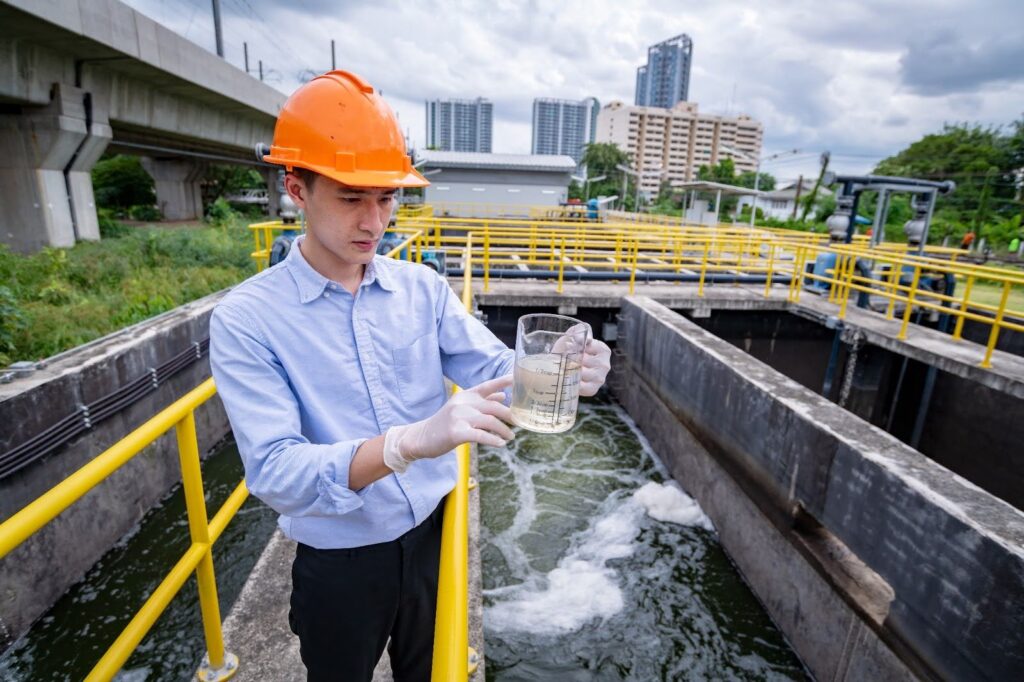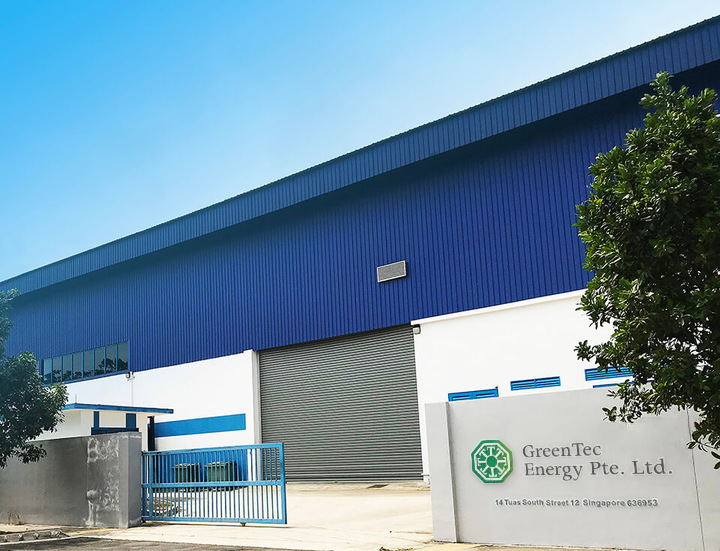Advantages And Disadvantages Of Anaerobic Wastewater Treatment
October 9, 2024

Anaerobic wastewater treatment is the process of breaking down organic contaminants with microorganisms. It is used in various industrial applications including agriculture, food and beverage, textile and many more.
It is important to familiarise yourself with the advantages and disadvantages of anaerobic wastewater treatment before choosing this method. Here’s everything you need to know:
How Does Anaerobic Wastewater Treatment Work?
In the absence of oxygen, the anaerobic digestion process can break down organic matter like manure, wastewater biosolids and food wastes. The treatment utilises anaerobic microorganisms, bacteria that thrive in oxygen-free environments.
These microorganisms decompose the organic matter in wastewater. The process takes place in anaerobic bioreactors, a reactor designed to convert pollutants into biogas, composed of carbon dioxide (CO2) and methane (CH4).
The reactor also separates the wastewater (effluent) from solid byproducts (sludge). The biogas will then be used for energy recovery while the sludge may undergo further treatment for agricultural use.
Advantages and Disadvantages of Anaerobic Wastewater Treatment
Advantages
- Energy Recovery: Biogas production is one of the key benefits of anaerobic treatment. Biogas is captured and used as a renewable energy source. This can generate electricity, heat or fuel, reducing dependency on fossil fuel.
- Low Energy Consumption: Unlike aerobic systems, anaerobic systems can function without oxygen. This will result in lower energy consumption, making it more cost effective.
- Reduction of Organic Waste: Anaerobic treatment effectively breaks down high concentrations of organic waste, leading to significant sludge reduction.
This decreases the need for further treatment or disposal, lowering overall operational costs. - Greenhouse Gas Mitigation: Anaerobic treatment mitigates the release of harmful gases into the atmosphere. It does so by capturing methane and converting it into energy. This also reduces a facility’s carbon footprint.
- Minimal Nutrient Requirements: Anaerobic bacteria require fewer nutrients to operate compared to aerobic systems. This can reduce the need for additional chemicals or external inputs.
- Versatility: Anaerobic systems can treat a wide range of industrial wastewater. This includes food and beverage, agriculture and textile industries. It can also be customised to treat various wastewater types and treatment goals.
Disadvantages
- Slow Start-Up Time: Anaerobic systems can take longer to establish compared to aerobic systems. The process of developing a stable population of anaerobic microorganisms may take weeks or even months.
This may delay the treatment system's full functionality.
- Sensitive to Environmental Changes: Anaerobic microorganisms are sensitive to temperature, pH, and toxicity levels. Significant fluctuations in these conditions can slow down or disrupt the treatment process.
This can lead to inefficiencies or the need for corrective actions. - Incomplete Treatment: Anaerobic digestion may not remove all contaminants, such as nitrogen and phosphorus. Additional post-treatment through aerobic processes might be needed.
This is required to meet certain discharge standards for certain pollutants. - Odour Issue: The breakdown of organic matter can produce unpleasant odours. This is due to hydrogen sulphide emissions. Odour control measures may need to be implemented to minimise environmental impact.
- Sludge Handling: Anaerobic treatment reduces the overall sludge volume. Nonetheless, the remaining sludge still requires further treatment and disposal. Dewatering or stabilising the sludge will require additional costs.
- High Initial Investment: The installation of anaerobic systems can be quite costly. While operating costs may be lower, the initial costs may be a barrier for smaller facilities.
Aerobic vs Anaerobic Treatment
Aerobic and anaerobic treatments have similar processes. The main differences lie in the need for oxygen; aerobic systems require oxygen while anaerobic do not. This leads to several differences in performance and application. Here’s what you need to know before making your decision:
Aerobic Treatment
- Requirements: This process needs oxygen to support biological activity.
- Energy Efficiency: Energy is required to inject oxygen into the system for the treatment process.
- Best Suited For: Ideal for treating low- to medium-strength wastewater. Typically containing less than 1,000 ppm of organic material, such as municipal sewage and wastewater from refineries.
- Byproducts: Generates a significant amount of activated sludge, but no biogas is produced.
- Common Equipment and Technologies: Technologies include trickling filters, rotating biological contactors, oxidation ditches, and other aerobic treatment systems.
Anaerobic Treatment
- Requirements: This process relies on a biological method that operates without oxygen.
- Energy Efficiency: More energy-efficient compared to aerobic systems. It doesn’t require aeration or the addition of oxygen to the treatment tanks.
- Best Suited For: Effective for medium- to high-strength wastewater. Usually containing over 4,000 ppm, such as wastewater from food and beverage industries.
- Byproducts: Produces biogas, primarily methane and carbon dioxide, along with smaller amounts of activated sludge.
- Common Equipment and Technologies: Utilises systems such as anaerobic lagoons, septic tanks, anaerobic digesters, continuous stirred tank reactors, and upflow anaerobic sludge blankets.
Conclusion
Familiarising yourself with the advantages and disadvantages of anaerobic wastewater treatment will give you a better idea of what to expect. If an anaerobic treatment is out of the picture, then maybe an aerobic system may suit your application better. Contact us to find out more!
 GreenTec Energy Pte Ltd (GTE) is a waste management company located in Tuas, Singapore.
GreenTec Energy Pte Ltd (GTE) is a waste management company located in Tuas, Singapore.
Our service includes Industrial waste, Oily waste, Marine waste.
To provide a hassle free solution to our customer is always the key approach and to ensure a win-win situation towards. As a NEA approved environmental company in Singapore, we take all our services seriously and to ensure maximum safety with compliances applied. Every step of our disposal processes are also designed to meet NEA & SCDF requirements, with latest treatment facilities and laboratories to test and treat all incoming waste before disposal.
GTE operates a total land area of about 100,000sqft at 14 Tuas South Street 12 Singapore 636953. With our comprehensive logistics and transportation fleet, we provide prompt and efficient services in transportation of waste to our premises.



